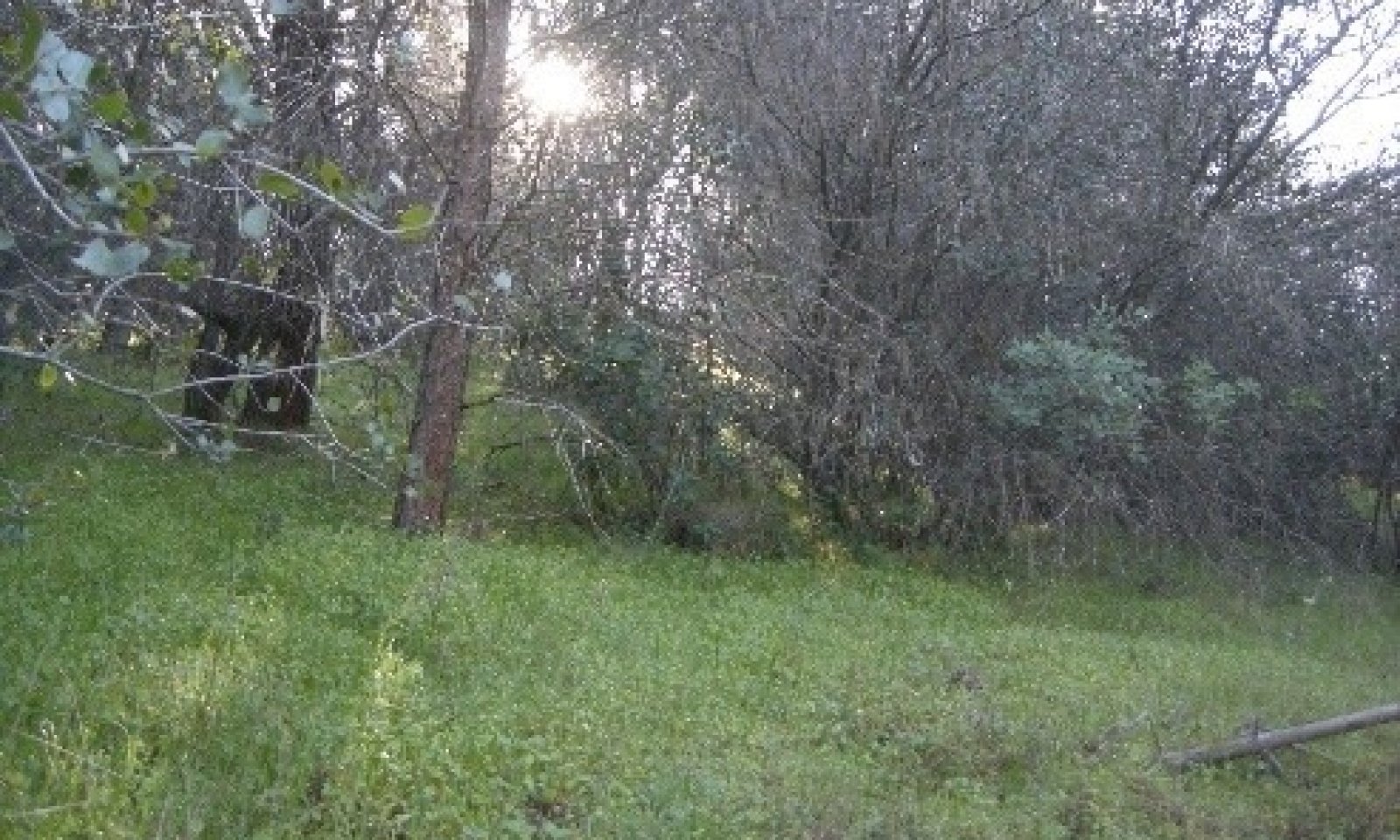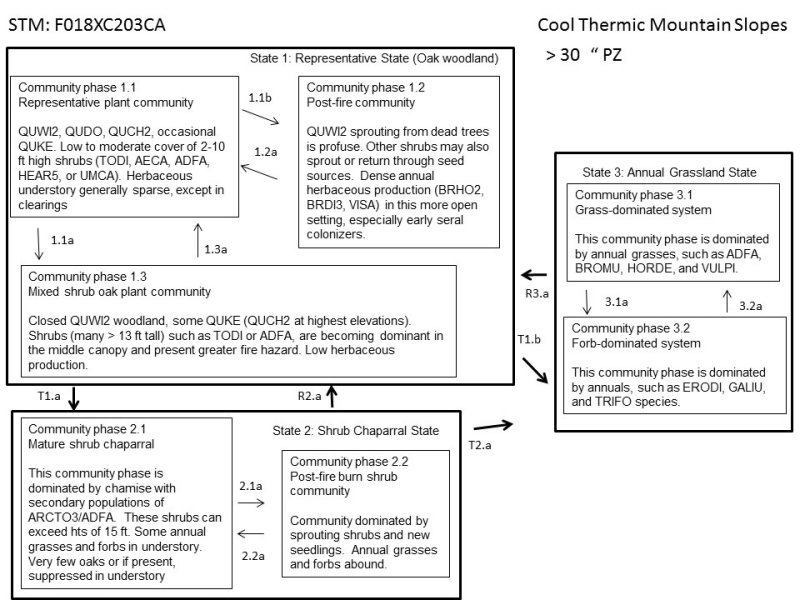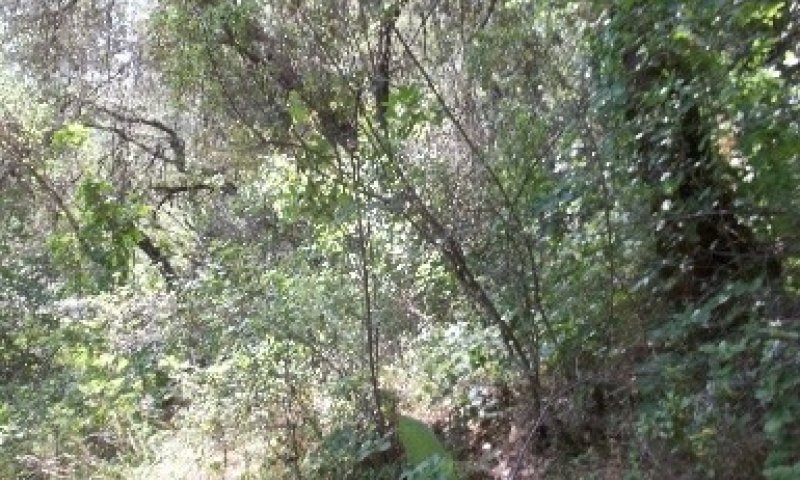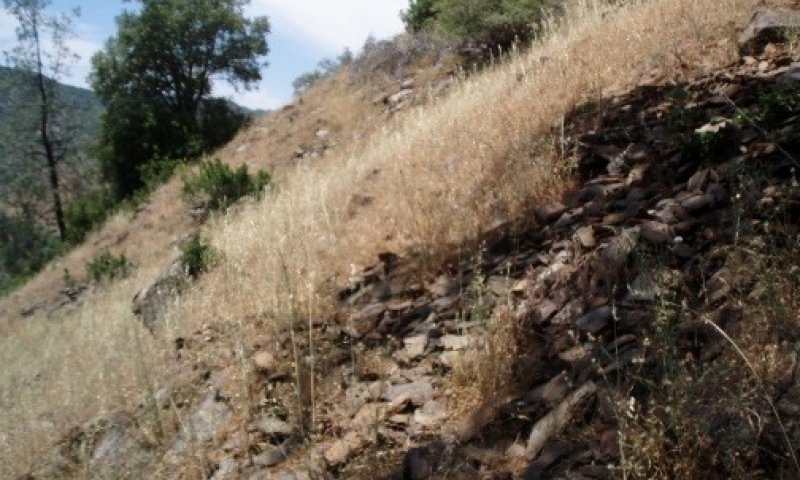

Natural Resources
Conservation Service
Ecological site F018XC203CA
Cool Thermic Slopes
Last updated: 4/24/2024
Accessed: 12/21/2025
General information
Provisional. A provisional ecological site description has undergone quality control and quality assurance review. It contains a working state and transition model and enough information to identify the ecological site.
MLRA notes
Major Land Resource Area (MLRA): 018X–Sierra Nevada Foothills
Major Land Resource Area (MLRA) 18, Sierra Nevada Foothills is located entirely in California and runs north to south adjacent to and down-slope of the west side of the Sierra Nevada Mountains (MLRA 22A). MLRA 18 includes rolling to steep dissected hills and low mountains, with several very steep river valleys. Climate is distinctively Mediterranean (xeric soil moisture regime) with hot, dry summers, and relatively cool, wet winters. Most of the precipitation comes as rain; average annual precipitation ranges from 15 to 55 inches in most of the area (precipitation generally increases with elevation and from south to north). Soil temperature regime is thermic; mean annual air temperature generally ranges between 52 and 64 degrees F. Geology is rather complex in this region; there were several volcanic flow and ashfall events, as well as tectonic uplift, during the past 25 million years that contributed to the current landscape.
LRU notes
LRU 18XC is located on moderate to steep mountains and hills in the Sierra Nevada Foothills east of Fresno, CA. The major differences between the southern and northern foothills are the dryer climate (12 to 37 inches of annual precipitation), greater summer/winter temperature variation, and steeper topography of the southern foothills. The geology of this region is predominately granitoid. The elevation ranges between 300 and 4100 feet above sea level. Warmer temperatures and lower precipitation (than at higher latititudes) allow for blue oak grasslands to exist at higher elevations. The soil temperature regime is primarily thermic, however some mesic soils are found at higher elevations of 18XC. At these upper elevations, the break in soil temperature regime (between thermic and mesic) is highly aspect dependent. Southern and western aspects at the steep, high elevations promote chamise-yucca plant assemblages. Buckeye is common in the concave positions. Riparian trees that are generally absent from the northern LRU’s include California Sycamore (Plantanus racemosa) and lemon scented gum (Eucalyptus citriodora).
Classification relationships
CLASSIFICATION RELATIONSHIPS
This site is located within M261F, the Sierra Nevada Foothills Section, (McNab et al., 2007) of the National Hierarchical Framework of Ecological Units (Cleland et al., 1997), M261Fc, the Lower Granitic Foothills and M261Fd, Southern Granitic Foothills Subsections.
Level III and Level IV ecoregions systems (Omernik, 1987, and EPA, 2011) are: Level III, Central California Foothills and Coastal Mountains and Level IV, Ecoregion 6c, Southern Sierran Foothills.
Ecological site concept
This site is characterized by deep to very deep soils occurring on steep to very steep foothills and mountains formed from granitic parent material. It generally occurs on broadly concave slopes (simple slopes), most often on backslope positions. Slopes typically range from 35 to 65%. Annual precipitation typically ranges from 25 to 31 inches per year. Elevation typically ranges from 2000 to 3500 feet.
The Andregg series is a common component correlated to this site. This soil is well drained, moderately deep and classifed as a coarse-loamy, mixed, active, thermic Ultic Haploxeralf.
Vegetation includes closed oak woodland with interior live oak (Quercus wislizeni), California buckeye (Aesculus californica) and canyon live oak (Quercus chrysolepis) occurring at the higher elevations. Poison oak (Toxicodendron diversilobum) and California bay (Umbellularia californica) are common shrubs in the understory. Herbaceous annuals such as soft chess (Bromus hordeaceus), ripgut brome, (Bromus diandrus), wild oat (Avena fatua), and common vetch (Vicia sativa) may occur in the understory, especially where there are canopy gaps, but herbaceous production is low (1000 to 1500 lbs per acre) due to low amounts of sunlight penetrating to the woodland floor.
Associated sites
| R018XC107CA |
Thermic Granitic Foothills south-facing This site commonly occurs nearby. |
|---|
Similar sites
| F018XC201CA |
Thermic Granitic Foothills Site relationships being developed. |
|---|
Table 1. Dominant plant species
| Tree |
(1) Quercus wislizeni |
|---|---|
| Shrub |
(1) Toxicodendron diversilobum |
| Herbaceous |
(1) Bromus hordeaceus |
Click on box and path labels to scroll to the respective text.








